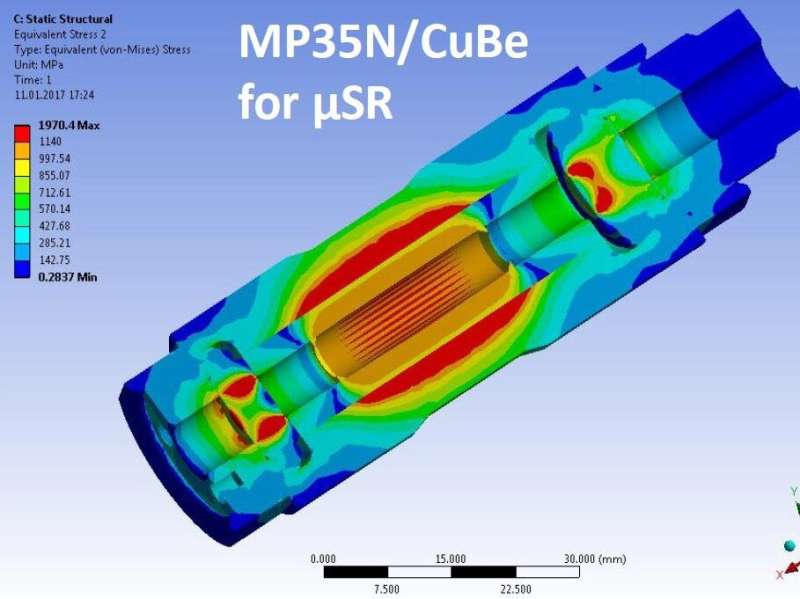Improving a piston-cylinder pressure cell for μSR experiments

Zurab Shermadini, Rustem Khasanov, Matthias Elender and Alex Amato at PSI have looked at the design of a double-wall piston-cylinder pressure cell specifically designed for muon-spin rotation (μSR) experiments.
The first step was to make both the inner and outer cylinders of a double-wall pressure cell design out of Copper Beryllium (CuBe), a common alloy used for μSR pressure cells. This material has well-defined low-background contributions to the μSR signal that are almost temperature-independent and therefore favorable for use in low-temperature μSR studies. The mechanical characteristics where then analyzed using the finite-element analysis (FEA) software ANSYS which allowed optimization of the cell dimensions to try and reach the highest possible pressure whilst keeping experiments safe.
A prototype was built which allowed a pressure of about 18 kbar, in agreement with the ANSYS simulations, but after a third consecutive pressure application, the outer cylinder broke as the stresses accumulated within it.
To improve the design, a second prototype was constructed using another nonmagnetic alloy commonly used for μSR pressure cells: MP35N. This material was used for the outer cylinder instead of the CuBe. Tests revealed that pressures of ~2.6 GPa could be reached without any irreversible damage of the cell. Luckily, as the muons mainly stop in the CuBe inner cylinder during experiments there was still a low-background SR signal despite the change in material of the outer cylinder.
The work has now been published in the Journal of High Pressure Research and μSR users now have access to a piston cell for μSR techniques that reaches pressures 1.5 times higher than previously possible.
Provided by CORDIS





















